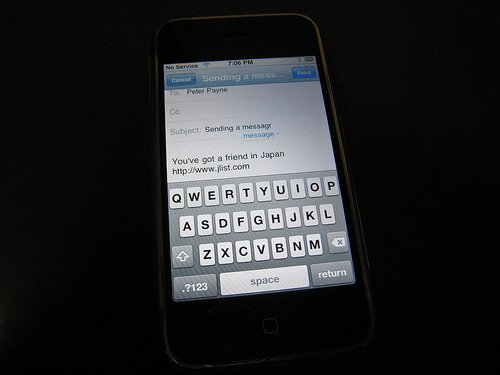Well, I’ve completed my return journey, and am safely back in Japan. Whenever people hear I’m flying across the Pacific they usually assume it’s a really horrible experience, however I’d say it can actually border on pleasant. With the amount of entertainment choices available to me as a modern traveler, from the new Harry Potter book to my MacBook loaded with games and movies to the shiny new iPhone I couldn’t resist buying (I’m very happy for that “prepaid” hack that lets you use the phone without signing up for the two year contract), I was doing just fine. Since there are no connections involved, it’s a lot more convenient flying to Japan than the three planes I had to take when traveling to Baltimore, for example.
It’s funny how some of the differences between Japan and the U.S. turn out not to be all that different at all. For example, when I first got to Japan it seemed odd to me that sports teams were usually named after companies instead of cities, e.g. the Yomiuri Giants, named for the giant Yomiuri newspaper company, or the Hanshin Tigers, owned by the Hanshin (which means “Kobe and Osaka” in case you were curious) railroad line. But after proper reflection, is this custom really any different from the trend of American stadiums being branded with corporate names, like Qualcomm Stadium and Petco Park in San Diego? Not really. Japan is certainly a country that has a different dynamic at work when it come to sex, and I’ve met gaijin in Japan who were less than happy about restaurants like the famous Anne Miller’s that have built a name for themselves around extremely attractive waitresses dressed in sexy “push-up” waitress uniforms. And yet, this really isn’t any different than what you can see at any Hooters or similar places in the U.S. I wouldn’t be surprised to learn that the core idea for the Anne Miller’s uniforms (roughly equivelent to the Playboy Bunny in terms of general cult status here) were directly “inspired” from the classic St. Pauli’s Girl from the beer ads, since they look very similar.
I talked last time about words like meganekko (眼鏡っ子), a word which means “girls with glasses” and which is pronounced “meh-ga-neh-KKO,” with a short pause where the double “k” goes. When properly written in hiragana, the “basic” writing system of Japanese, this short pause is called a “small tsu,” essentially the kana character read “tsu” written at half size (i.e., っ as opposed to つ). Linguistically it’s called a glottal stop, and while many languages have them, it’s odd to find a language that has a written character for the sound. Usually expressed in the Roman alphabet with double consonants, some words that have this brief pause include gakkou (gah-[small pause]-KOH, school), nattou(nah-[small pause]-TOH, fermented soybeans) and matcha (mat-[small pause]-CHA, green tea). For anyone interested in learning to read Japanese, one reason I recommend textbooks or flashcards that only feature hiragana, katakana and kanji as opposed to romanized Japanese is, forcing yourself to learn the actual characters that the Japanese use not only helps you learn to read better, it also helps your Japanese pronunciation, since the rules of English (like silent ‘e’ and all that) will only trip you up when trying to pronounce words correctly.















